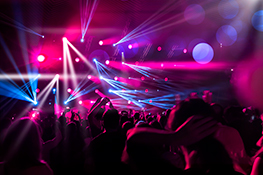Stage Lighting Design: From Concept to Reality – A Practical Guide
Understanding the Vision: Conceptualizing Your Stage Lighting Design
Before a single fixture is even considered, a successful stage lighting design hinges on a clear understanding of the production’s overall vision. This involves close collaboration with the director, set designer, and other key creative personnel. Discussions should revolve around the mood, atmosphere, and specific storytelling elements that need to be highlighted. Consider the style of the production – is it a realistic drama, an abstract dance piece, or a vibrant musical? Each genre demands a vastly different lighting approach. Developing detailed mood boards and sketching initial lighting plots can be invaluable tools during this initial conceptual phase. Remember to think about the practical aspects too – the size and shape of the stage, available power sources, and any limitations of the venue. Careful consideration at this stage prevents costly mistakes later on.
Selecting the Right Tools: Choosing Your Stage Lighting Fixtures
With a clear concept in hand, the next step is selecting the appropriate lighting fixtures. The vast array of choices available can be overwhelming, ranging from traditional incandescent and tungsten-halogen lamps to the modern LED and moving head fixtures. Each fixture type offers unique capabilities and limitations. LEDs, for instance, provide energy efficiency and vibrant color mixing options, while moving head lights allow for dynamic and complex visual effects. Consider factors like color temperature, beam angle, intensity, and special effects when making your selection. Research different manufacturers and models to identify fixtures that best suit your needs and budget. Remember to factor in the number of fixtures required to achieve the desired lighting effects across the entire stage.
Crafting the Blueprint: Creating Your Lighting Plot
The lighting plot serves as the blueprint for your design. It’s a detailed technical drawing that shows the placement of each fixture, its type, color, and intended function. Software packages specifically designed for lighting plotting significantly aid this process, allowing for precise positioning, beam visualization, and the creation of lighting cues. Accurate measurements of the stage and surrounding areas are crucial for creating a realistic and functional plot. Consider incorporating safety factors into your plot, accounting for potential obstructions and ensuring safe access for technicians during the setup and performance. A well-documented lighting plot is essential for smooth technical rehearsals and a flawless execution of the show.
Programming and Cueing: Bringing Your Design to Life
With the lighting plot completed, the next stage involves programming the lighting cues using a lighting console. This is where the magic truly happens, as you translate your design into a sequence of timed lighting changes. Each cue represents a specific moment or mood in the production, allowing for dynamic shifts in atmosphere and illumination. Using the console, you can control various parameters such as intensity, color, gobo patterns, and movement of moving lights. Careful attention to timing and transitions is crucial for a seamless and impactful performance. Remember to incorporate sufficient time for rehearsals and adjustments during this stage to fine-tune the lighting cues and ensure they perfectly complement the overall production.
Testing and Refinement: Achieving Perfection Through Collaboration
Thorough testing and refinement are essential to achieving a polished and effective lighting design. Tech rehearsals provide the opportunity to integrate the lighting with other elements of the production, such as set changes and actor movements. Collaboration with the director, actors, and other technical crew members is crucial at this stage. Feedback from these individuals allows for necessary adjustments and refinements to ensure the lighting complements the storytelling effectively. Iterative testing and refinement are often required to achieve the desired effect and ensure the lighting design contributes to a truly memorable performance.
Conclusion: The Power of Effective Stage Lighting
Stage lighting design is a complex and rewarding process that demands creativity, technical expertise, and strong collaborative skills. By following the steps outlined in this guide, from conceptualization to refinement, you can transform your vision into a breathtaking stage lighting experience. Remember that effective stage lighting not only illuminates the stage but also profoundly shapes the emotional impact of the performance. The right lighting design enhances storytelling, elevates the overall production value, and creates a truly unforgettable experience for the audience.


 Auditorium Construction Services
Auditorium Construction Services 